Gardening in small spaces is becoming increasingly popular, especially for urban dwellers. Even a modest porch can be transformed into a lush mini greenhouse, allowing you to grow vegetables, herbs, and flowers year-round. By optimizing space, sunlight, and microclimate conditions, a small porch can become a vibrant, productive garden. This guide explores step-by-step strategies, materials, and tips for creating a mini greenhouse on your porch.
Why a Porch Greenhouse Works
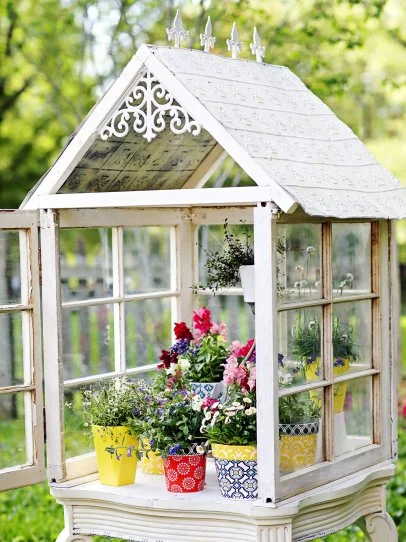
A porch is an ideal starting point for a greenhouse because it provides:
- Shelter: Protects plants from wind, heavy rain, and temperature fluctuations.
- Sunlight: Often receives partial to full sunlight depending on orientation.
- Microclimate: Enclosed or semi-enclosed porches trap heat, creating a warmer environment than open outdoor spaces.
- Accessibility: Easy access for daily maintenance, watering, and harvesting.
Transforming your porch into a mini greenhouse allows for extended growing seasons, reduced exposure to pests, and efficient use of space.
Step 1: Assessing Your Porch Space
Before building, evaluate the size, orientation, and exposure of your porch:
- Size: Measure length, width, and height to determine how many plants you can accommodate.
- Sunlight: Observe sunlight patterns to identify areas receiving 4–6 hours of direct sun, crucial for most vegetables and flowering plants.
- Protection: Check if the porch is sheltered from wind and heavy rain. Enclosed or semi-enclosed porches work best.
- Load Capacity: Ensure the structure can support the weight of containers, shelves, and soil.
Tip: Even a small 4×6-foot porch can host vertical plant racks and hanging planters for maximum productivity.
Step 2: Choosing the Right Containers
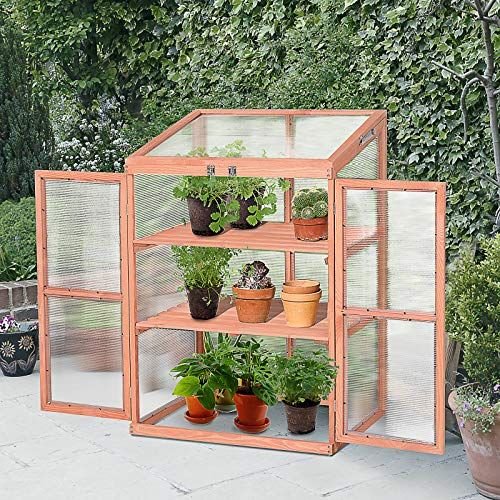
Containers are essential for a porch greenhouse. They should provide adequate root space, drainage, and mobility.
Recommended Container Types:
- Plastic Pots: Lightweight, retain moisture, and durable.
- Fabric Grow Bags: Encourage air pruning for healthier roots and are easy to move.
- Raised Planter Boxes: Ideal for grouping multiple plants together and can be custom-built to fit porch dimensions.
- Hanging Planters: Maximize vertical space for herbs or trailing plants like tomatoes and strawberries.
Tip: Ensure all containers have drainage holes and use saucers or trays to prevent water from damaging the porch floor.
Step 3: Selecting Plants for a Porch Greenhouse
Not all plants thrive in a mini greenhouse. Choose compact, high-yield, or shade-tolerant varieties suitable for container gardening.
Best Plant Choices:
- Vegetables: Cherry tomatoes, peppers, lettuce, spinach, and radishes.
- Herbs: Basil, parsley, cilantro, mint, and thyme.
- Flowers: Marigolds, petunias, begonias, and impatiens.
- Small Fruit Plants: Strawberries, dwarf citrus, and cherry tomatoes.
Tips for Plant Selection:
- Select dwarf or determinate varieties for limited space.
- Group plants by light requirements to optimize placement.
- Incorporate companion planting to enhance growth and reduce pests.
Step 4: Organizing Your Porch Greenhouse Layout
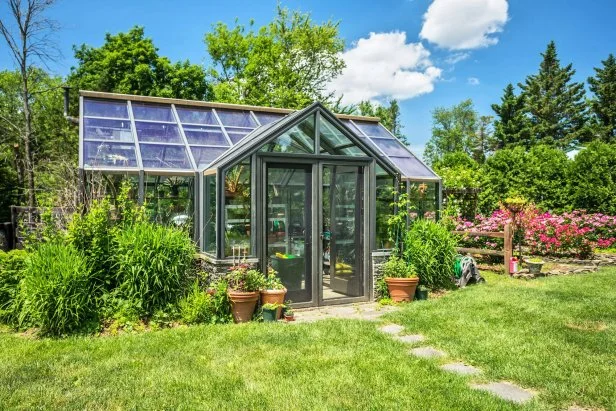
Maximizing space is essential in a small porch greenhouse. Vertical gardening, shelving, and hanging options can dramatically increase plant density.
Layout Strategies:
- Vertical Shelves: Install tiered shelves along walls for small pots and seedlings.
- Hanging Baskets: Utilize ceiling space for trailing plants.
- Window Sills: Place herbs or small vegetables to maximize natural light.
- Corner Plant Stands: Use corners for medium-sized pots or planters.
Tip: Keep pathways clear for easy watering, pruning, and harvesting.
Step 5: Controlling Light and Temperature
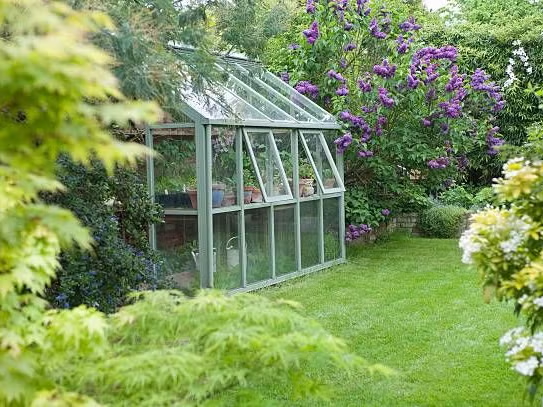
Light and temperature are crucial for plant growth. A porch greenhouse can trap heat and light, but some adjustments may be necessary.
Light Management:
- Ensure plants receive 6–8 hours of sunlight daily.
- Use grow lights for winter months or shaded porches.
- Rotate containers weekly for even light exposure.
Temperature Management:
- Use insulating materials like bubble wrap or thermal curtains to maintain warmth during cold months.
- Open vents or windows on hot days to prevent overheating.
- Small fans can improve air circulation, reducing fungal diseases.
Step 6: Watering and Fertilization
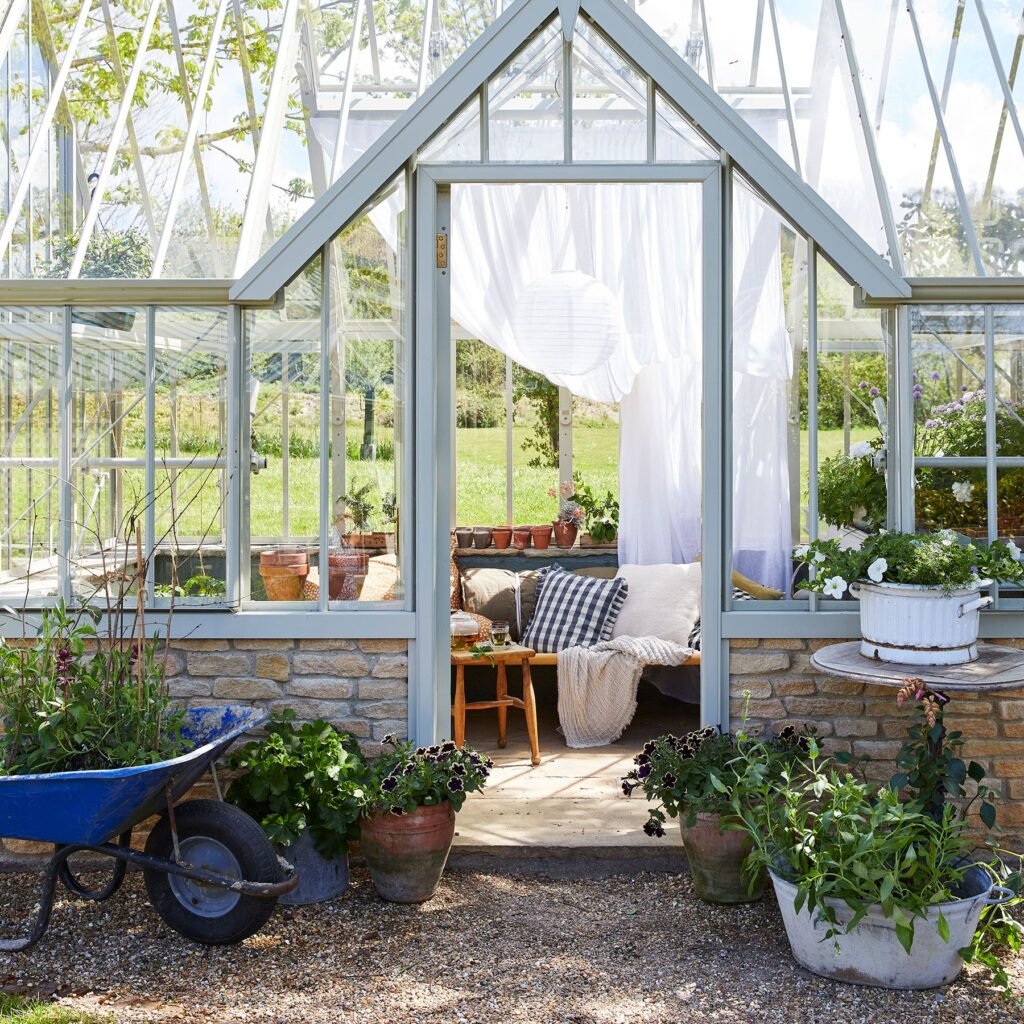
Plants in containers require consistent watering as pots dry out faster than garden soil.
Watering Tips:
- Check soil moisture daily; water when the top inch of soil feels dry.
- Use self-watering pots or trays for convenience.
- Avoid waterlogging to prevent root rot.
Fertilization Tips:
- Apply liquid fertilizer every 2–3 weeks for rapid growth.
- Use slow-release fertilizer in larger containers for sustained nutrients.
- Choose fertilizers appropriate for vegetables, herbs, or flowers depending on plant type.
Step 7: Pest and Disease Management
Even a small porch greenhouse can attract pests. Early intervention is key.
Common Pests:
- Aphids, whiteflies, spider mites, and fungal gnats.
Prevention and Management:
- Inspect plants daily for signs of pests or disease.
- Use insecticidal soap or neem oil for small infestations.
- Maintain good air circulation and avoid overcrowding.
- Remove dead leaves or infected plants promptly.
Step 8: Seasonal Care
Porch greenhouses allow for year-round gardening, but seasonal adjustments are necessary.
Winter Care:
- Use grow lights to supplement short days.
- Add insulating blankets around pots or shelves.
- Group plants to share warmth.
Summer Care:
- Monitor temperature and provide ventilation to avoid overheating.
- Mulch containers to reduce evaporation.
- Increase watering frequency during hot, dry days.
Step 9: Harvesting and Maintenance
Proper harvesting and maintenance ensure continuous growth and productivity.
Harvesting Tips:
- Pick vegetables and herbs when fully mature to encourage more production.
- Regularly trim herbs to prevent flowering and maintain leaf production.
- Deadhead flowering plants to stimulate new blooms.
Maintenance Tips:
- Rotate containers periodically for even light exposure.
- Clean pots and trays to prevent fungal growth.
- Replenish soil nutrients and compost at the start of each growing season.
Step 10: Additional Enhancements
To make your porch greenhouse more efficient and enjoyable, consider:
- Rainwater collection: Reduces water costs and provides natural irrigation.
- Automatic drip irrigation: Saves time and ensures consistent watering.
- Decorative shelving and plant stands: Enhances aesthetics while saving space.
- Temperature and humidity monitors: Optimize growth conditions for sensitive plants.
Conclusion
Transforming a small porch into a mini greenhouse is an accessible and rewarding way to grow fresh vegetables, herbs, and flowers, even in urban environments. By carefully selecting containers, plants, and layout strategies, you can maximize space, light, and productivity.
Key steps include:
- Assess your porch for sunlight, size, and load capacity.
- Select container-friendly plants suitable for small spaces.
- Organize vertical and horizontal planting layouts to optimize space.
- Manage light, temperature, and watering to ensure healthy growth.
- Monitor for pests and maintain plants regularly.
A well-designed porch greenhouse not only produces fresh, nutritious food but also enhances your living space with greenery and natural beauty. With careful planning and consistent care, even a small porch can become a thriving, year-round gardening haven.
